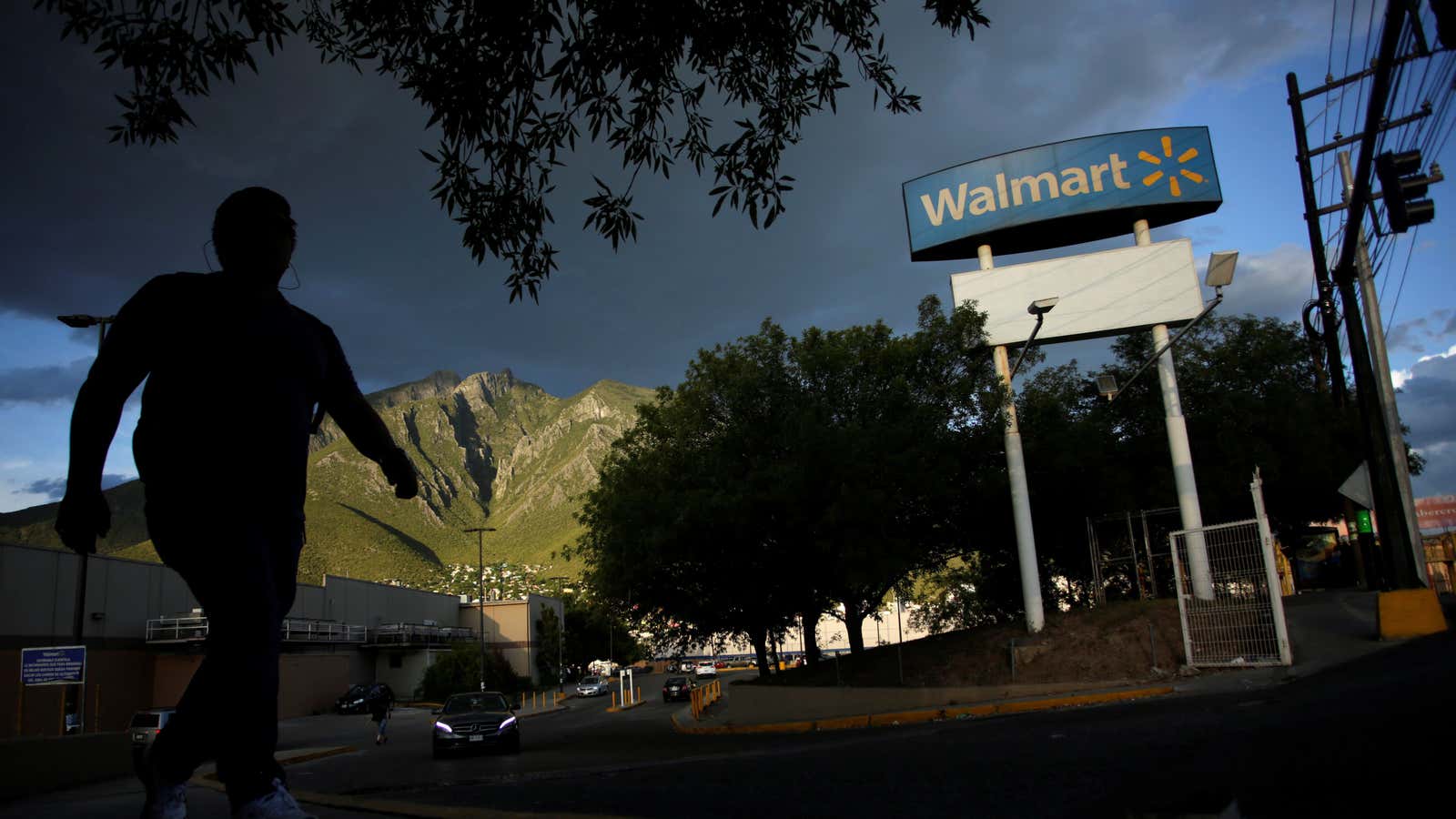Each year, Mexicans working abroad send billions of dollars back to their home country. In 2019, these remittances, including personal transfers and payments to employees, grew to some $39 billion, according to the World Bank, or about 3% of Mexico’s GDP.
This enormous sum moves in a variety of ways—banks, money-transfer services like Western Union, and a growing number of digital channels, such as apps. It is in this last category where Walmart, the world’s largest retailer and a growing force in global e-commerce, sees a huge opportunity.
The company plans to introduce in-app remittances and more services in Mexico through Cashi, the digital payment app it launched in the country in 2018. Walmart declined to provide the timing of the launch other than to say it will be within the next two years.
“Basically we are creating this wallet or payment app that will allow you to receive your remittances from the US or from other countries,” says Ignacio Caride, senior vice president in charge of e-commerce for Walmart Mexico & Central America. “If you receive your remittances in our app, we know and can track your source of funds. We can offer you credit. We can offer you some benefits inside a store. We can offer you express checkout. We can offer you different things because we have more information and understand better your behavior online.”
The US—Walmart’s home market—is where most remittances flowing to Mexico originate. In 2018, they totaled nearly $35 billion, according to the research arm of BBVA, a Spanish financial services firm. Walmart already enables remittances to Mexico through a partnership with MoneyGram and another agreement with Western Union and UniTeller.
But Caride says Walmart’s share of remittances to Mexico is still small. He believes Walmart can grab a larger slice and simultaneously supercharge its retail business.
Mexico makes up a sizable slice of Walmart’s international sales. The company doesn’t break out those sales by country, but in the year through Jan. 31, 2020, its international segment generated $120 billion in sales (pdf), accounting for nearly a quarter of the company’s total. Walmart operates more than 2,500 stores in Mexico, far more than any other geography outside the US. These stores still bring in about 96% of Walmart’s revenue in Mexico, according to Caride, but digital sales are growing fast, especially since the the start of the Covid-19 pandemic, which has driven consumers to do more of their shopping online. On a Nov. 17 call with analysts, Brett Biggs, Walmart’s CFO, called out the “triple-digit” e-commerce growth in Mexico as a particular strength in Walmart’s international business in the recent quarter.
Companies typically make money on remittances in part through commission fees, which are often 5% or more. But Walmart’s motivation “is not to get into the payment ecosystem as a new revenue stream,” Caride says. While the company is still working out exact pricing, Caride says Walmart will be able to charge less than competitors, “because once the money comes into our ecosystem, into our app, we can serve you different things and convince you to use those funds inside our stores, and that’s where our benefit is.”
Cheaper remittance channels are in demand. Fees cost migrants billions annually. Part of the promise of technologies such as Facebook’s Libra cryptocurrency is in reducing these expenses, which would benefit those in developing countries who depend on remittances. Arturo Herrera, Mexico’s deputy finance minister, told Reuters last year that each remittance sent gives up about 8% of its value on average to commission charges and foreign exchange rates. He called for costs to come down and noted, “that is something the fintechs are probably in a better position to do than traditional actors such as banks.”
Walmart believes it can fill some of that demand itself, and make it easier for shoppers to spend the funds they’re receiving at Walmart in the process.
